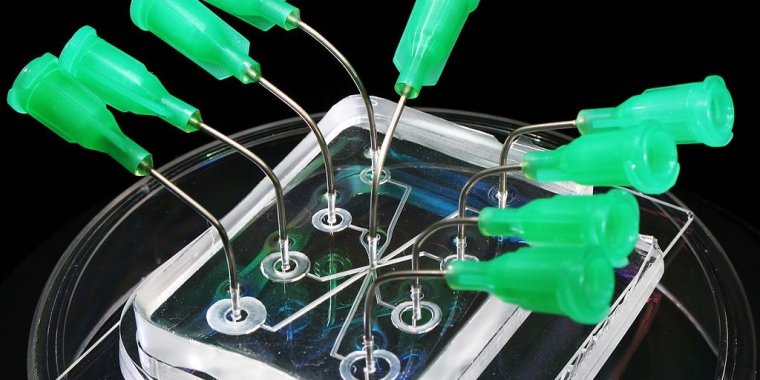| News / Science News |
Scientists say new medical diagnostic chip can sort cells anywhere with an inkjet
Scientists from the Stanford University School of Medicine announced the invention of a new diagnostic tool that can sort cells by type: a tiny printable chip that can be manufactured using standard inkjet printers for possibly about one U.S. cent each. Lead researchers say this may bring early detection of cancer, tuberculosis, HIV and malaria to patients in low-income countries, where the survival rates for illnesses such as breast cancer can be half those of richer countries.

Most labs on chips, like this microfluidics chip, require time and expert staff to manufacture. ![]()
Existing methods tend to identify cell types using fluorescent or magnetic labels, which take time to attach, but this platform uses the phenomenon of dielectrophoresis: because different kinds of cells have different levels of receptivity to electrical fields, a trait called polarizability, when an electric potential gradient is activated around the chip, different cells are pulled in different directions at different speeds.
This allows doctors to diagnose cancer by determining the number of tumor cells in a patient's blood sample. Different chips can be printed to diagnose different diseases.
Physically, the scientists say, the system has two parts. Cells are held in a clear microfluidic chamber made of silicone. The chip itself is an electronic strip that can be printed onto flexible polyester.
Most lab-on-a-chip devices must be manufactured by professional staff in specialized facilities called clean rooms and can take weeks, but the chip component of this system can be made almost anywhere in as little as twenty minutes. (Wikinews)
YOU MAY ALSO LIKE



